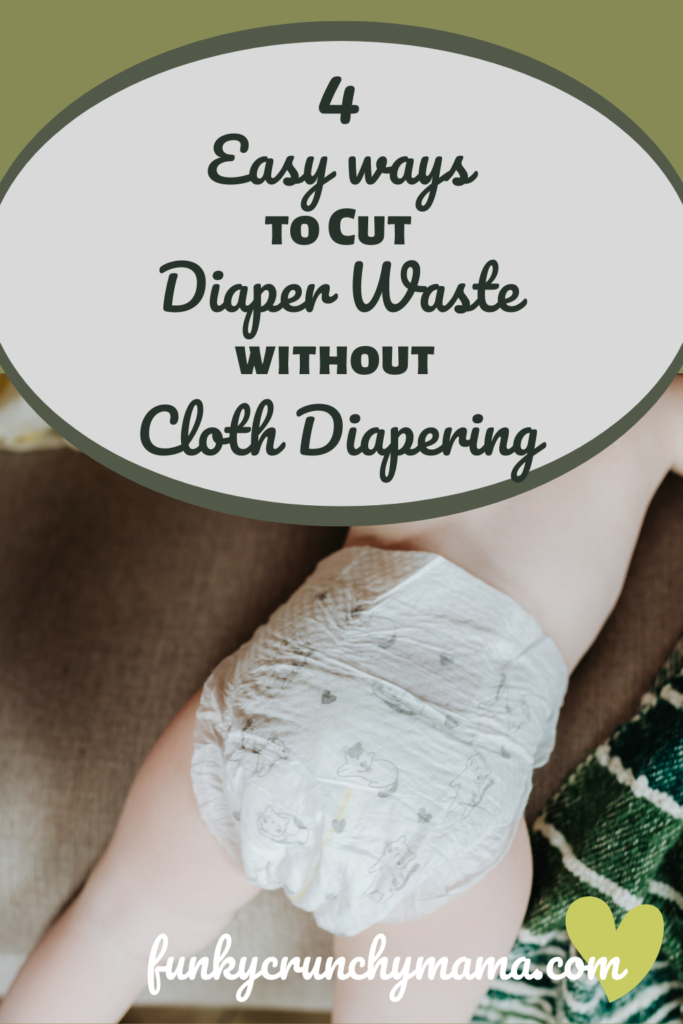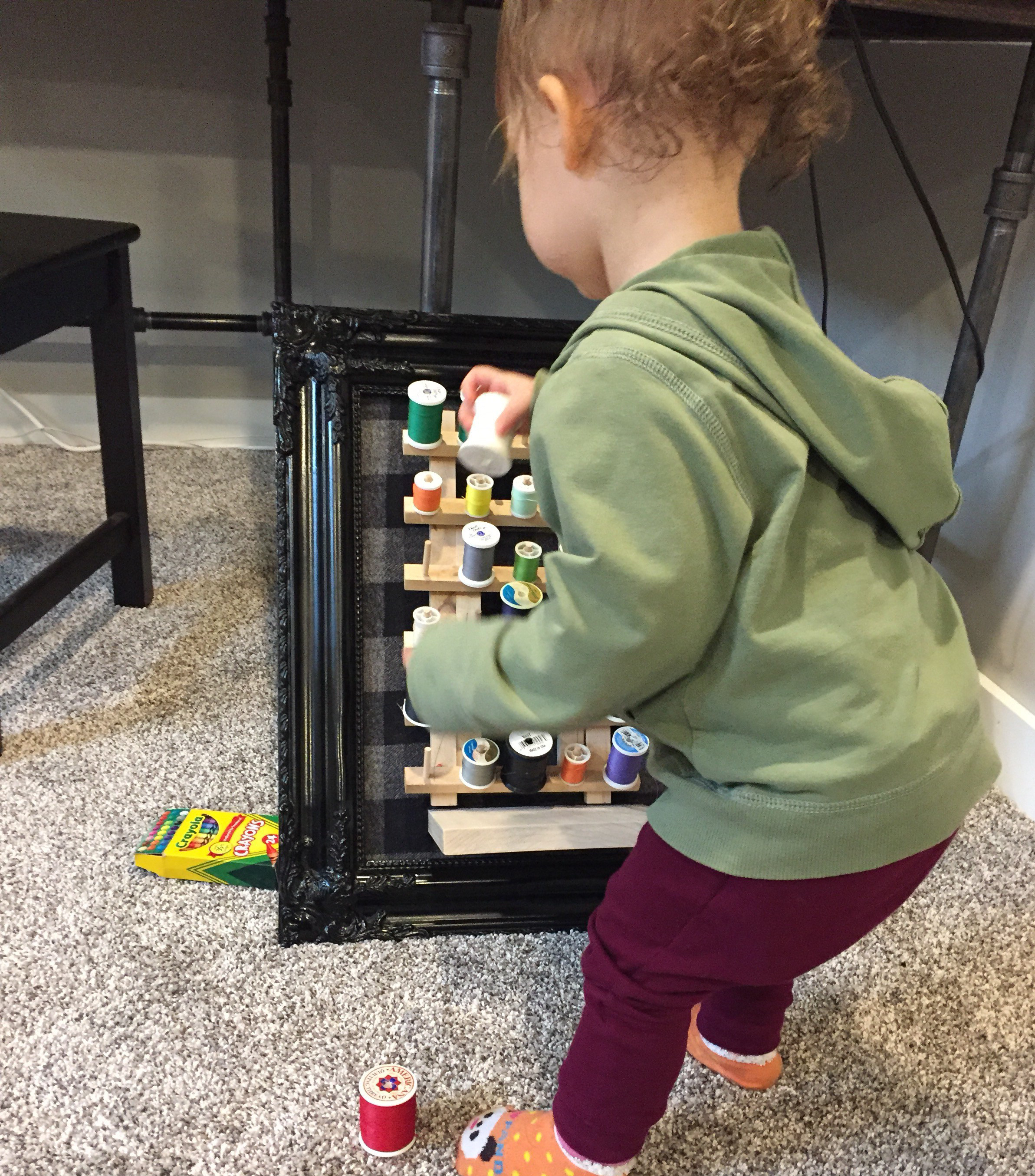Becoming a first-time parent can be an incredibly overwhelming time. Trying to reconcile all the dreams you had pre-baby with reality is tough and diapering can certainly be one of them.
I know I’m not alone as a cloth diaper dropout. Many parents have invested in supplies, read all the resources, and been mentally prepared for years of extra [dirty] laundry only to throw in the towel a couple of weeks in.
While I never returned to cloth after my initial dropout, I did learn a few tips over my diapering years to reduce the environmental impact of diapering and/or save some money down the line.
Here are four ways to cut your environmental impact without going cloth:

This post contains affiliate links.
Use flushable liners
Do you know anyone that scrapes the poop out of disposable diapers before throwing them away? Me neither. But we’re supposed to. Human waste is meant to be flushed and sent to the wastewater treatment plant. By putting it in the landfill among the rest of our household refuse, we’re posing an eventual threat to the quality of our groundwater.
Enter flushable liners.
One of the few people I know that were successful with cloth diapering recommended that I buy some flushable liners. If you use cloth, flushable, biodegradable liners make cleaning your inserts a little easier and create minimal waste. Liners kind of look like dryer sheets and work like a paper towel to catch the poop. While they don’t work very well in the liquid newborn poop phase, they do work well after introducing solids.
To use them, just keep a bucket by the changing table and flush that crap. It’s a simple way to help the planet.
Potty train early
When we were expecting our second, potty training our first became a top priority. Parents who had succeeded with training earlier than those that “waited until they’re ready” all seemed to use the same method: Oh Crap.
Oh Crap states that the ideal window to train is between 20-30 months old. (Diaper companies marketed “waiting until they’re ready” to keep sales going! It has nothing to do with child brain development.)
Training ourselves in this method taught us on how to spot the signs of readiness. After potty training our first at 26 months, we were ready to take on training our second even earlier. We were easily able to identify when to make the leap and he was trained at 21 months, saving months — even years — of diapering.
While it may sound crazy to read about potty training before baby is even born, Oh Crap! is absolutely on my list of books to read while pregnant. The time goes by so fast! Read about our initial experience using Oh, Crap here.

Elimination communication
Elimination communication (EC) is a centuries old potty training technique that can start as soon as birth. Will you get some strange looks for trying to potty train your infant and young toddler? Absolutely. But you’ll also have beaucoup bragging rights when your kid’s the first out of diapers. In the meantime, you’ll use far fewer diapers than your counterparts.
Check out this article on parents.com for the basics on this method.
Use Eco-Friendlier Diapers
There are a number of greener diaper brands out there. They’re made with less plastic and fewer chemicals, reducing their time to degrade in the landfill. Some areas may also offer compostable diapers as part of a service. (If your area has a cloth diaper laundering service, check to see if they also offer this product.)
Here are six available greener brands worth checking out:
- Seventh Generation
- Hello Bello (co-founded by Kristin Bell & Dax Shepard — one of my favorite celeb couples!)
- Dyper
- Honest Company
- Nurture
- Joone
There are more, as well, and new ones are constantly entering the market! I encourage you to research, test, and find one that works best for your budget & baby.
Still want to try cloth?
Awesome. I applaud your efforts and dedication. But my final tip? Wait until you’ve introduced solids (or return to it after you have) and keep with those flushable liners.
Why wait?
First, cloth diaper covers can be bulky and may not fit your newborn or will leak more than disposables.
Secondly, newborn poop is an animal all its own. I won’t go into the dirty details, but along with new baby life, trying to use cloth on a newborn can simply be too overwhelming. Give yourself some grace.
Baby wipes, too!
Of course, diapers aren’t the only part of cleaning up a baby that can become more eco-friendly. Wipes are also plastic-based and, over time, create substantial waste.
Urine is sterile and switching to cloth wipes is an easy thing to do for what will be 85% of diapering situations. While wipes are not as expensive as diapers, it will save you a little bit of money in the long haul. I make and sell these all-cotton, upcycled flannel tissues in my Etsy shop. While I market them as tissues, they can easily be used as baby wipes or baby washcloths, as well.
Our family has been using them (as tissues) for several years now, and I assure you that the impact it has on laundry is minimal and care is very simple.
Of course, you can always make your own, as well. Here are some tips for making your own. And if you dig the box, I have a tutorial for those here. 🙂
Good luck! I’d love to know what works for you! If you have any other tips, please share them in the comments below!
— Melissa, Funky Crunchy Mama







It’s completely understandable how overwhelming the transition to parenthood can be, especially when reconciling expectations with reality. Diapering, in particular, is a significant aspect that many new parents find challenging, especially when faced with the initial commitment of cloth diapers.
The experience of starting with cloth diapers and then transitioning away from them is not uncommon. However, your journey highlights an important aspect of parenthood: flexibility. Despite the initial plans, adapting to what works best for you and your baby is key.
Learning from your experience and finding ways to reduce the environmental impact or save money in diapering is commendable. It’s about finding a balance that suits your lifestyle while being conscious of the environmental implications. Whether it’s opting for eco-friendly disposable diapers, exploring diaper recycling options, or employing other sustainable practices within diapering, every effort counts toward reducing the overall impact.
Sharing these insights and tips can be incredibly helpful for other parents navigating similar challenges. It’s a way to support and guide them in making informed decisions about diapering that align with their values and circumstances. Parenthood is a journey filled with learning curves, and your experience offers valuable insights that can benefit others in their parenting journey.